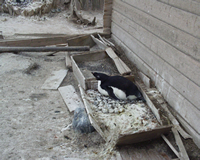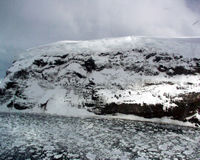Stage 1: Immersion
- List student prior knowledge about Antarctica (add and review throughout the unit).
- Make a vocabulary list (may be sorted by alphabet), which may become a glossary for written/presentation work.
|

|
|
Possible learning experiences
These experiences may differ according to each individual student/teacher. Some students may have little knowledge about Antarctica, so 'front loading' and explicit teaching of knowledge may assist in successfully completing an authentic challenge on time and to an acceptable standard.
- Do we need another marine reserve? Protect Ross Sea, the last, most pristine, open ocean marine ecosystem on earth. (The Last Ocean)
- ASPA and ASMA: Antarctic governance by Treaty Nations. (Antarctica New Zealand)
- Fire on the ice: 'Flames destroy Sir Ed’s old hut' NZ Herald, 25/5/2009, page 1.
- Amundsen (1911) to Hillary (1958): dog sleds and farm tractors, a journey to the South Pole.
- Radio: entertainment, keeping in touch and emergency on the Antarctic Continent and beyond.
- Energy conservation and Scott Base: seal blubber to wind turbine (K427 Scott Base Project).
- Gondwana and the theory of Continental Drift: the New Zealand connection (Harold Wellman).
- Construct a cross section of Earth from the molten iron core to the vacuum of outer space, including oceans.
- Captain Frank Worsley, Navigator; The James Caird’s 1300-km voyage from Elephant Island to King Haakon Bay, South Georgia, and a trek to the Husvik Whaling Station in Stromness Bay, 1916. (Shackleton’s Captain)
- 'James Clark Ross...never achieved the sensational fame so often surrounding misadventure.' Quote from David Ainley, 2002, page 2, The Adelie Penguin: Bellwether of Climate Change, Columbia Press. What did David mean by this statement and who was he talking about?
- Describe how living things survive in Antarctica. Contrast these adaptations with plants and animals where you live.
- Navigation in Antarctica: compass & sextant versus GPS.
- The history of map making: solving the problem of making flat paper represent Planet Earth (Mercator): map conventions - Why does the North Pole often sit at the top centre of a map and New Zealand appear at the extreme bottom left or right?
|
 |
|
The following references come from the teaching units 'Ice in the Solar System Activities', authored by Richard Shope from JPL and produced by Dr Julie Edmonds at the Carnegie Academy for Science Education.
-
An Ice Experience
- The importance of precise language, definitions and specialist terms; accurately writing about observations and experiences.
- Document ice melting in water.
- Why does condensation form on the outside of the container?
- 1. Ice Is Water, Water Is Ice: Melting and Freezing
- Observe water/ice using magnifiers, its phase changes and introduce temperature scales (including Kelvin, Fahrenheit, Celsius).
- 2. Ice Has a Structure: H2O
- Precursor learning through acting out how water molecules bond and how they change with phase, i.e. vapour, liquid and solid.
- The molecule dance.
- 4. Ice Floats
- Observe ice floating in water, and record what happens when it is pushed below the water surface.
- Explain why ice floats.
- Refer to '2. Ice has a Structure'.
- Will melting icebergs raise Earth’s sea level?
- 7. Layers of Ice
- How layering (stratification) tells an environmental story of change over time.
- Compare with the sections of kauri tree at Matakohe Museum, Northland.
- Students may create their own ice strata and a story to go with it.
- Compare this story with a peer’s work, which may include a time marker such as global events (e.g. volcanic eruption, atmospheric nuclear testing) as reference points.
- 8. Life in Icy Places
- Experiment using fair-testing techniques, preserving food by comparing samples left in a room, in the cool of a refrigerator and in a freezer.
- Be aware that bread may have additives to reduce spoiling, so results may be skewed.
- Looking for micro-organisms in Antarctica, the ocean depths, in the crater of Mt Erebus or other environments inhospitable to humans.
- Of course the organisms have adapted to these places and would probably find environments favourable to humans inhospitable.
- 9. Ice in Space
- If micro-organisms can survive in the ice of Antarctica and other extreme environments, they may also survive in the primeval ice of comets in the solar system and beyond.
- We may use space art to depict some of these places where micro-organisms may survive, using the knowledge gained from this study and research into the solar system.
- 12. Ice in the Shadows
- Looking for micro-organisms in the shadows of Moon or Mercury craters as well as comets.
- Scientists use language in certain ways, for example, they need to be open to the unexpected result. They do not say 'This will happen', because if it doesn’t, they look 'stupid'.
|

|
Stage 2: Brainstorming and Questioning
- What questions make you think?
- What questions will give information that will solve/answer our question or problem?
- What questions will add to our knowledge?
- What questions will produce information for decision making?
|
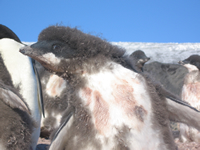
|
Stage 3: The Challenge
- Formulate learning intentions and success criteria with students.
- Design and publish an evaluation sheet including sections for self, peer and teacher comment, three things learned, three things enjoyed, what could be done better next time.
|
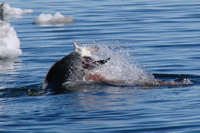
|
Stage 4: Finding Out
- Leading into the authentic challenge.
|
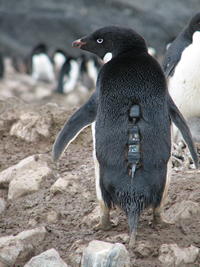
|
Stage 5: Sorting and Presenting
Results from the authentic challenge may add to audience knowledge of Antarctica and feed into the Taking Action stage.
- Invite students to create a six-slide PowerPoint presentation, in pairs, to support an argument of their choice.
- Their speech will be 5–8 minutes long and in that time they will inform, persuade and call their audience to action.
- This presentation may be used with a school, class or small group, depending on the authors’ confidence in public speaking.
- Invite students to create a six-slide PowerPoint presentation, in pairs, to explain a practical project of their choice.
- Their speech will be 5–8 minutes long and in that time they will show the steps involved in completing their project, explain the research required, introduce the experts they consulted, and detail future development.
- This presentation may be used with a school, class or small group, depending on the authors’ confidence in public speaking.
|
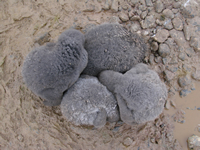
|
Stage 6: Reflect and Evaluate
Experience has shown that some students prefer reflection and evaluation on a weekly basis or some other time interval, not just at the end of the study.
- Suggest students write a formal letter inviting their teacher’s senior managers to be part of their audience, informing the managers that they will take part in the reflection and evaluation of student inquiry learning.
- Video the session to document peer-to-peer comment and student-to-adult interactions.
- Review the video and use the outcomes to plan the next inquiry learning-step.
- Perhaps those managers may be invited to voice their opinions about student learning at the end of the evaluation session, either verbally on tape or in writing at a later stage.
- The above video may become part of a learning journey for the year and/or an ePortfolio accessible by parents on a World Wide Web-based arrangement.
- Discuss, draft and publish student insights on the previously prepared evaluations sheet.
- Outcomes form a basis for 'co-constructing' the next learning steps.
|
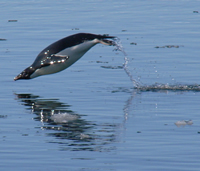
|
Stage 7: Future Steps – Taking Action
- Where to now?
- Present results to a wider community that may include the School Board of Trustees and parent groups.
- Write a letter to a local paper calling readers to action or invite a reporter to the school to interview students.
- Create a seminar so that other interested students may join in your work.
- Use the results of learning evaluations to plan for the next steps in inquiry learning, which may include transferring skills and attitudes to another curriculum area.
|
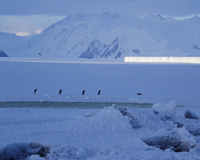 |
